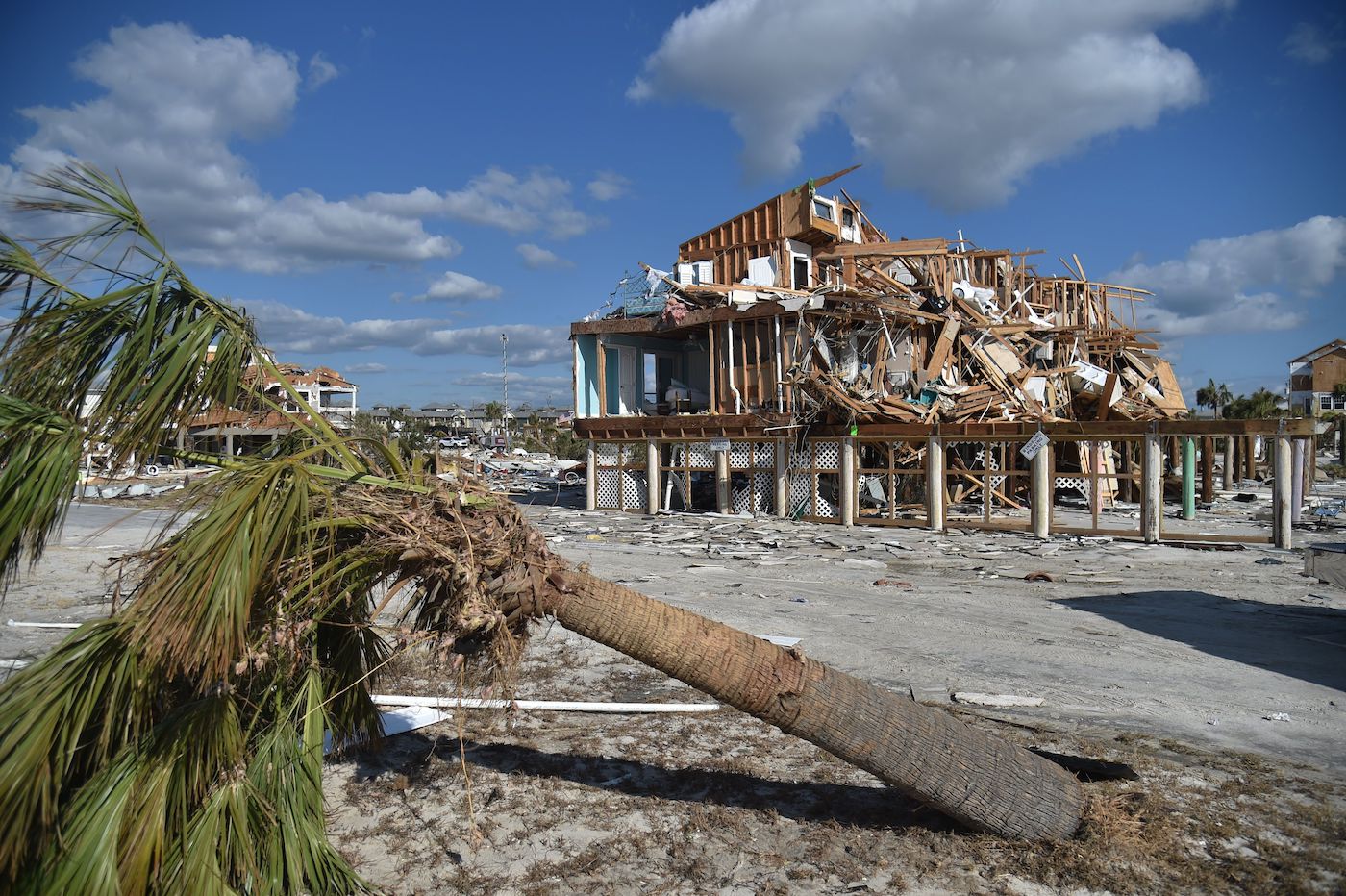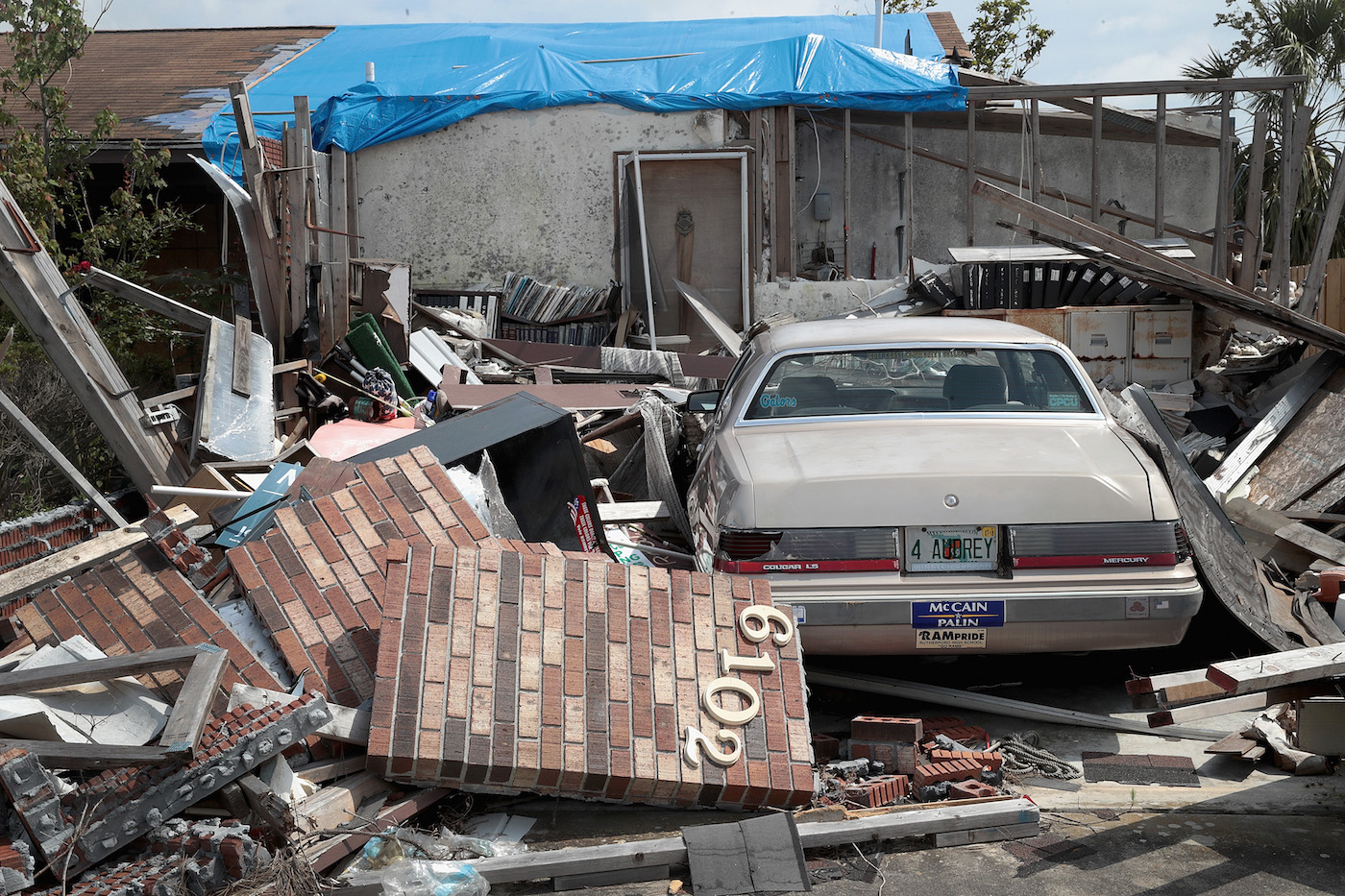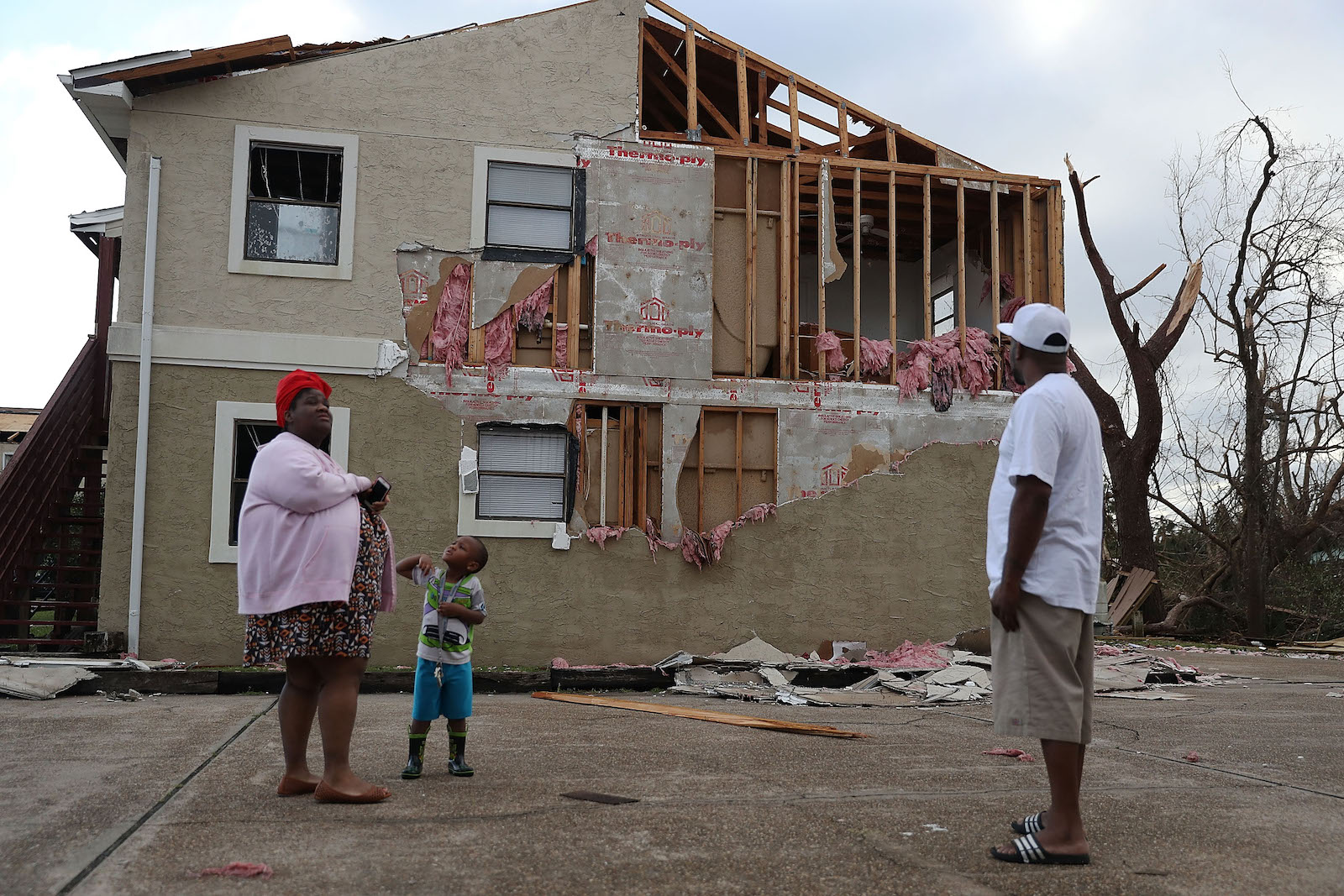This piece originally appeared at Inside Climate News. It is republished with permission.
Patricia Roundtree expected that the hurricane that was about to slam the Florida Panhandle in October 2018 would be a close call, like so many other storms over the years that had skimmed over her neighborhood in Panama City but never hit directly.
But Hurricane Michael was different, rapidly intensifying over the Gulf of Mexico and walloping Panama City with violent 155 mph winds that catapulted homes, shattered car windows, and tossed trees up into the sky. The first Category 5 hurricane to make landfall on the U.S. mainland since 1992, Michael left Roundtree’s home in ruins.
“It was the most frightening thing I’ve ever seen,” said Roundtree, 56. “When you’re really in the middle of something like that you get the full grasp of what nature can actually do.”
Since the hurricane, the Federal Emergency Management Agency, or FEMA, and other federal agencies have injected over $3.1 billion in funds to help residents recover, in the form of loans, grants, and flood insurance payments. Hundreds of millions more have been made available by the Florida Department of Economic Opportunity to rebuild homes, roads, and hospitals, and support local businesses.
But many residents in historically Black or low-income neighborhoods remain stranded in tarp-covered and mold-infested homes that are only half rebuilt, with little or no financial assistance to complete the repairs and get their lives back on track, according to several community organizations based in Bay County.
Despite promises by the Biden administration to emphasize environmental justice and focus funding on communities of color that have been disproportionately affected by climate-induced extreme weather, the advocates fault FEMA and its byzantine procedures that reject needy applicants but then invite them to repeatedly reapply for assistance.
“I’ve had clients that have come through and got approval on their eighth time,” said Donna Pilson, executive director of Rebuild Bay County. “Who does that?”
Many of the rejections stem from FEMA’s strict requirements for proving homeownership, even though many people in these communities inherit their homes from family relatives and lack the required documentation, Pilson said.
The broader issue, meanwhile, is one that afflicts much of the nation: a lack of affordable, quality housing. Many of the homes destroyed by Hurricane Michael were built in the 1960s and now require major renovations to bring them up to modern building codes.
Hurricane Michael battered the coast between Panama City and Cape San Blas for four hours, with Mexico Beach and Tyndall Air Force Base east of Panama City sustaining catastrophic damage.
When the winds and the storms subsided, the sheer scale of the catastrophe was on display. Glass shards littered the roads. Trees, entangled in electrical wires, obstructed entrances to homes. Cars landed on roofs. Hurricane Michael killed at least 45 people, damaged 60,000 homes, and caused about $25 billion in total damages, including $18.4 billion in Florida.
“It was the four longest hours of my life,” said Janice Lucas, executive director of the LEAD Coalition of Bay County, a community organization that is working to help strengthen ties in historically underserved neighborhoods. Her home was destroyed during the hurricane but she was able to find shelter at her sister’s home.
Many residents, like Roundtree, have spent the past three years living without a roof or walls. Some began renovations but had to stop because of soaring costs— forcing them to breathe in particulate matter, dust, debris, and other compounds that may cause respiratory illnesses. Others still live alongside water puddles, blotches of black mold, and infestations from insects and rodents. Unprecedented heavy rains and Covid-19 restrictions have had compounding effects on people’s livelihoods the past two years.
“I had to tarp my roof about seven times because the wind would come and tear up the tarp,” said Roundtree. “And this brings in water and more mold inside my house, and, basically, I can only live in about two-thirds of my house.”

Money floods in, but to whom?
In the months immediately following Hurricane Michael, efforts to rebuild the devastated region came primarily from local community organizations rather than external donors. With little media attention and a general lack of awareness of the extensiveness of the damage, donations that normally pour in after disasters from large organizations trickled in instead.
The Red Cross, for instance, raised only $36 million in donations six months after Hurricane Michael, about half the amount collected from the destruction of Hurricane Florence in North Carolina in that same year, despite similar estimated damages. Michael also garnered significantly less money and attention than Hurricane Harvey and Hurricane Irma.
Eventually, through a series of grants, the $3.1 billion in FEMA funds became available. Then, in December, Florida Gov. Ron DeSantis announced an additional $12 million in funding to help rural communities in the northwest region of the state recover from the hurricane, including Bay County. DeSantis announced over $91 million in additional funding last month for projects aimed at strengthening infrastructure and community resiliency.
In Panama City, officials have been working to redesign the infrastructure and architecture of hard-hit and vulnerable neighborhoods like St. Andrews, Millville, and Glenwood, where Roundtree lives, since April 2020. After including residents in meetings and getting their feedback, the plans include improving major roads, playgrounds, and public parks in Glenwood; building a waterfront park in Millville; and redesigning roads and improving existing parks in St. Andrews. Last spring, city officials approved plans to start implementing some of these recovery strategies in Millville and St. Andrews.
As recovery funds have become available from the federal and state governments, many areas struck by the hurricane are bouncing back: Blue tarps covering people’s crumbling homes have disappeared and been replaced with new roofs. Businesses in many areas have reopened, once again luring tourists. And many home exteriors have been renovated. “It appears, from the outside, that [Panama City] is way down the road with recovery,” said Lucas.
But much of this recovery has taken place for private businesses and in more affluent, tourist-driven areas near the beach, said Roundtree. From an economic point of view, she said, this makes sense: Investments of this kind help jumpstart the economy. But for residents living in less privileged communities, like Millville, Glenwood, and St. Andrews, conditions have remained much the same. Countless people here still live in semi-constructed homes, under makeshift roofs, and with insufficient funds or financial assistance to renovate their homes.
Significant proportions of these people are Black, low-income, or elderly residents who live in neighborhoods that have generally been neglected by the state, said Jan Booher, executive director of Unitarian Universalist Justice Florida. Crumbling infrastructure, broadband problems, and a general lack of state and federal assistance is not unusual in these communities, she said.
Legal obstacles also compound this neglect. Residents often cannot assemble the necessary documents and don’t know how to navigate the intricate process required to get financial assistance from the government, said Pilson. She added that some of her clients have been systematically rejected by FEMA for financial assistance and then told to continue applying, without ever receiving an explanation of whether reapplying would make a difference.
“Advancing equity within our programs is our primary goal,” said a FEMA spokeswoman in response to these criticisms, citing a new program designed to improve individual assistance, especially for underserved communities. In 2021, FEMA also changed its program policy guidelines to help serve disadvantaged communities to “help this process and make it less cumbersome, ensuring all survivors have equal access to disaster aid and resources.”

‘I have no intention of leaving’
At the heart of this inability to speed recovery for low-income people lies one key issue: affordable housing. Without upgrading old houses to make them more resilient or building new ones that communities can afford, people will likely continue to struggle, said Pilson. With climate change, Hurricane Michael is likely to be just one of many hard-hitting storms that will strike the area in decades to come.
Solving this problem also comes down to engineering: Residents living in St. Andrews, Millville, and Glenwood typically live in older, more fragile homes that date back to the 1960s, built before stringent wind resistance standards were put in place after Hurricanes Andrew in 1992 and Ivan in 2004. Since restoration of these homes legally requires them to be brought back to current standards, the renovations require large investments.
Many residents, unable to afford or get assistance to pay for extensive repairs—repairs have average $80,000 in Panama City— have had no choice but to endure dismal conditions, said Pilson. That has been hard for them, she said, financially, and in terms of their own mental and physical wellbeing.
A 2020 survey conducted by the UUJF coalition of 100 households hit by hurricane Michael showed that over half of the respondents were concerned about air quality for themselves or for other family members in their households. About a third said they were still in the process of recovering from the hurricane.
Roundtree, who lives with her husband in a house with a living room that is unusable because of leaks, torn-down walls, and mold, has had to contend with year-round allergies and respiratory problems.
“Seasonal allergies are one thing, but when it’s year-round and you get sinus infections—it’s a problem with both of us now,” she said. Slipping, tripping, and living in precarious conditions have also affected many people who still reside in these homes, according to a survey conducted by the Bay County Health Department.
Being stuck in these homes throughout much of the pandemic has also exacerbated health-related problems for the communities, said Pilson. Stringent quarantine measures have forced people to breathe in dust, chemicals, and allergens.
For many, the struggle has been too much to bear: Scores of people have resorted to leaving their homes, migrating to areas that may be less susceptible to climate-related catastrophes. Others, like Roundtree and her husband, say that simply isn’t an option.
“I was born and raised and educated here in Panama City,” said Roundtree. “And I have no intention of leaving.”



